So let’s talk about a self-guided side-birding trip to Costa Rica. This will be the first of a three part series on the places I went. Starting with the “mid Pacific Lowlands”, then moving onto the “south Pacific Lowlands”, and finally ending with the “Mountains”. So let’s go.
At anytime you can click on a species name that is a link to go to a gallery to see more pictures or larger versions.
DAY 1
We flew from Salt Lake to Denver on Saturday the 11th then took the Red Eye to San Jose, arriving in Costa Rica just after 5:00am. The flight had a pretty cool stretch over Texas where lighting strikes were happening on a rate of more than 1 per second as far as the eye could see. Other than that I didn’t sleep much as this was my first foreign trip and I was a bit anxious. After making our way through customs and immigration we had to wait an hour for the rental place to pick us up. While we waited I picked up my first lifers with BLUE-AND-WHITE SWALLOW and RUFOUS-COLLARED SPARROW at the airport. At the rental place I nabbed the national bird—CLAY-COLORED THRUSH; then we hit the road for the drive to the coast.
On the drive I didn’t stop to look at anything, but spotted a few birds as we went, mostly vultures, a few woodpeckers, and one flock of CRIMSON-FRONTED PARAKEETS. Our first stop was at the Tarcoles River, a popular stop for tourists to check out the Crocodiles under the bridge—but also a popular birding stop because it’s the first “major” stop on the way down the south pacific coast. Right out of the car I could hear RUFOUS-NAPED WRENS going crazy. From the bridge I added about 20 lifers including BLACK-BELLIED WHISTLING-DUCK, MANGROVE SWALLOW, TRICOLORED HERON, BOAT-BILLED FLYCATCHER, WILSON’S PLOVER, and WOOD STORK. It was a great introduction stop and I highly recommend this location as a stop. It is supposed to be a fairly reliable spot for the rare and elusive Yellow-billed Cotinga—which I did not see during my trip.
Continuing down the coast we only made it about 10 miles before I stopped the car to check out a swirling flock of MAGNIFICENT FRIGATEBIRDS. As I got out of the car I looked up to see 2 SCARLET MACAWS flying by in the distance. I grabbed my camera as 2 more passed, followed by 2 more. The pictures I got were out of focus and really bad, but I saw one of my top 10 species to see for the trip so it was alright.
The rest of the drive south I kept adding a bird here and a bird there. Both GROOVE-BILLED and SMOOTH-BILLED ANI, several species of dove and pigeon, TROPICAL KINGBIRD and a couple other flycatchers. We drove through Parrita and over the Parrita River, then onto the Playa Palo Seco where we made our way south down the playa to our resort where we would spend the next 5 days. The birding on the playa wasn’t stellar as most of the natural vegetation had been removed in favor of palms which were part of the major palm oil plantations in the area. The plus side was a large stretch of Mangroves which would provide some of the specialties of the area.
The rest of the first day was spent relaxing at the pool and on the beach and no new birds were really added. In the evening I strolled the beach while Sam was sleeping and was surprised to find a WILLET foraging at the tide line. As I found out both this species and Whimbrel were uncommon summer residents on the coast. The day ended with COSTA RICAN SWIFT flying over as darkness hit.
DAY 2
On our second day we hopped in the car and headed back north along the coast to Jaco, a surf town where we figured we could do some shopping, and hit a popular beach. As we pulled into Jaco I spotted a field with 3 SOUTHERN LAPWING—the only 3 of the trip. While we watched a CRESTED CARACARA flew over, followed by a GRAY HAWK—all the while BLUE-BLACK GRASSQUIT were buzzing away in the bushes across the road.
After a few hours at the beach and in town—where if you go you must visit the Jaco Taco Bar—we took off to head back south to Playa Palo Seco. We took a side trip down a road that hugged the beach where I picked up YELLOW-HEADED CARACARA, WHITE-COLLARED SEEDEATER, VARIABLE SEEDEATER, and PALE-VENTED PIGEON.
Several small flocks of MEALY PARROTS and ORANGE-CHINNED PARAKEETS roamed the area and a couple hybrid HOFFMANN’S x RED-CROWNED WOODPECKERs provided nice photo opportunities. As we headed back to the main road I noticed 3 SCARLET MACAWS flying nearby so pulled over and got a photo that was at least in focus!
DAY 3
On Tuesday we spent the morning at the resort before heading south to Quepos and the beach at Manuel Antonio. During breakfast every day we were joined by a SCALY-BREASTED HUMMINGBIRD which perched near the restaurant. Didn’t really do any birding, but enjoyed some hot weather, warm ocean water, and a tropical drink on the beach. On the drive back to Playa Palo Seco I picked up an AMAZON KINGFISHER near the Parrita Shrimp Farm. Further Down the road were 2 of the 4 ROADSIDE HAWKS we saw during the trip.
DAY 4
On our 4th day we opted to just relax at our resort.
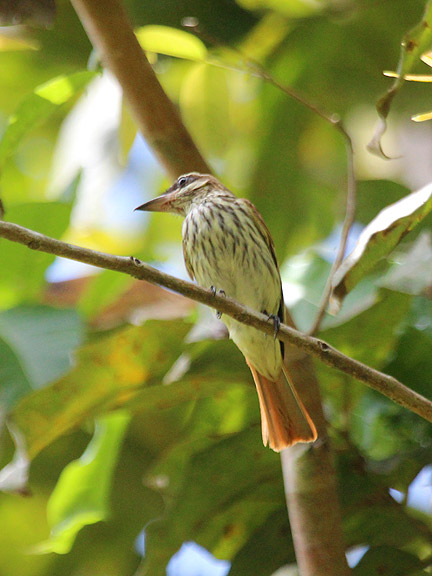 We spent some time swimming in the pool and the ocean, and it rained quite a bit. I took a short walk around the resort and found WHITE-TIPPED DOVE, BANANAQUIT, and RUFOUS-TAILED HUMMINGBIRD. In between rain showers we got a few hours of sun and were able to take a tour of the mangroves. I had high hopes to nab the majority of the specialty birds but soon found that difficult. There were plenty of YELLOW WARBLERS singing in the trees, and RINGED, GREEN, and AMERICAN PYGMY KINGFISHER were all picked up. I finally heard 2 MANGROVE VIREOS singing up a storm, followed by 2 STREAKED FLYCATCHERS (to the right) that responded rather well to pishing.
We spent some time swimming in the pool and the ocean, and it rained quite a bit. I took a short walk around the resort and found WHITE-TIPPED DOVE, BANANAQUIT, and RUFOUS-TAILED HUMMINGBIRD. In between rain showers we got a few hours of sun and were able to take a tour of the mangroves. I had high hopes to nab the majority of the specialty birds but soon found that difficult. There were plenty of YELLOW WARBLERS singing in the trees, and RINGED, GREEN, and AMERICAN PYGMY KINGFISHER were all picked up. I finally heard 2 MANGROVE VIREOS singing up a storm, followed by 2 STREAKED FLYCATCHERS (to the right) that responded rather well to pishing.I thought for sure I would see Mangrove Hummingbird, but no such luck. We had a great encounter with a MANGROVE BLACK-HAWK (currently conspecific with Common), and saw a few LITTLE BLUE HERON. The surprise bird of the trip was a WHIMBREL perched on a dead snag along the river. The big miss that I somehow missed everywhere I went on the trip was Boat-billed Heron.
Back at the resort as we sat on the porch of our cabin a small hummingbird lit up in the tree in front of us. I grabbed my binoculars and raised them to find a MANGROVE HUMMINGBIRD just 20 feet from us. I was able to get a few shots of this specialty and highly sought after species.
DAY 5
We headed back to Manuel Antonio to hike in the National Park. The birding was pretty slow and that was a shock. I thought the jungle would be phenomenal, but it was pretty dead.
I did get great looks at a DOUBLE-TOOTHED KITE, heard both FERRUGINOUS PYGMY-OWL and GREAT TINAMOU, and came into a small flock following an ant parade. That flock included TROPICAL GNATCATCHER, LONG-BILLED GNATWREN, PLAIN XENOPS, COCOA WOODCREEPER, and LESSER GREENLET.
We rounded out our hiking with a loop out on a small peninsula where we were able to spot BROWN BOOBY on a nearby rock islet. Right as we left the park we found a WHITE IBIS eating out of a coconut on the beach. Besides the birds we saw 3 sloths, 2 species of monkeys, some pretty cool lizards & frogs, and the biggest butterfly I have ever seen.
We headed back to the resort for our last night on the mid Pacific Coast, making a couple stops including one at the mouth of the Parrita River, where there were lots of COLLARED PLOVER, probably 20 LESSER NIGHTHAWKS feeding and sitting on the sandbar, and a huge flock of TERNS that included BRIDLED, ROYAL, CASPIAN, GULL-BILLED, and SANDWICH.
As I tallied the birds form the first 5 days I had just over 100 lifers, and had seen some pretty cool stuff. Perhaps the most exciting thing for future birding was that I left Carara National Park for a future trip when I could devote some time to the area. As the last day came to an end, I looked forward to heading down the coast and seeing what else was in store.
Labels: costa rica, life birds, photography, Travel, trip reports

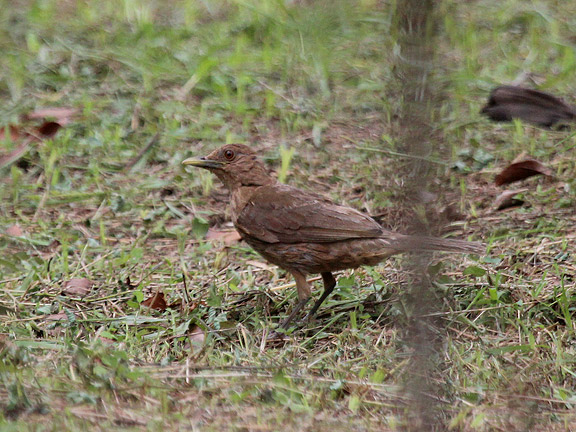
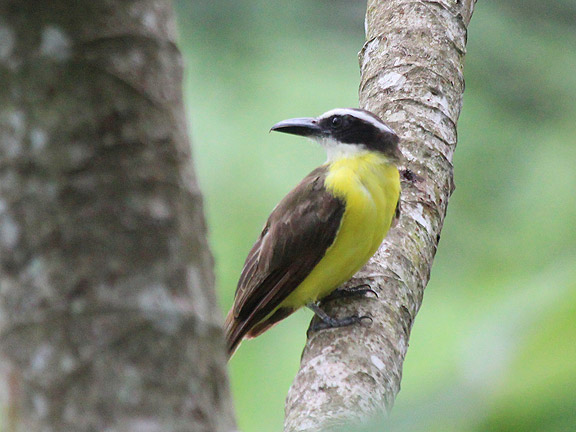
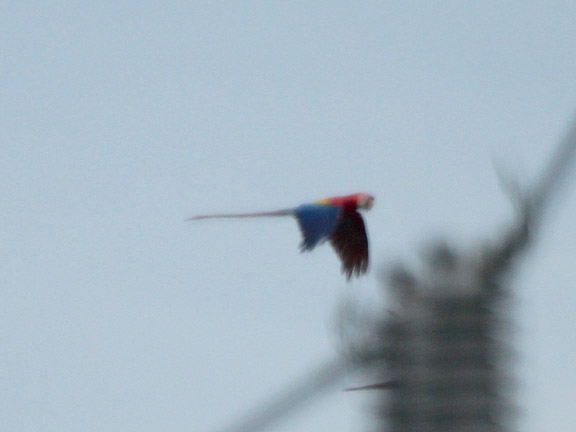


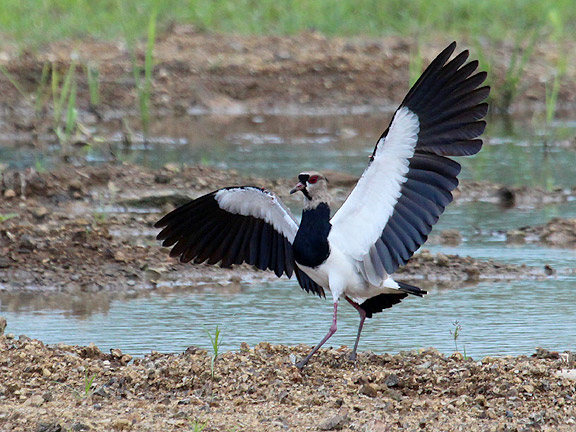

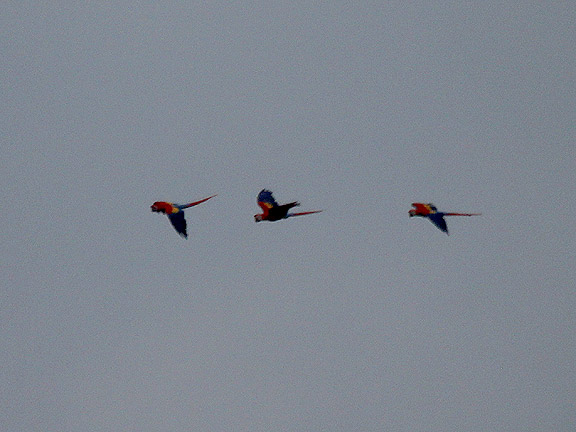
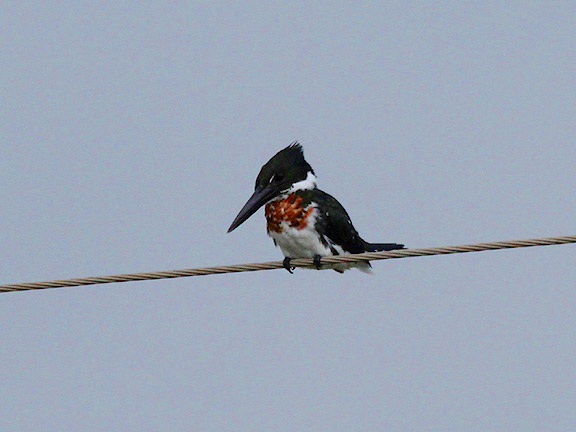
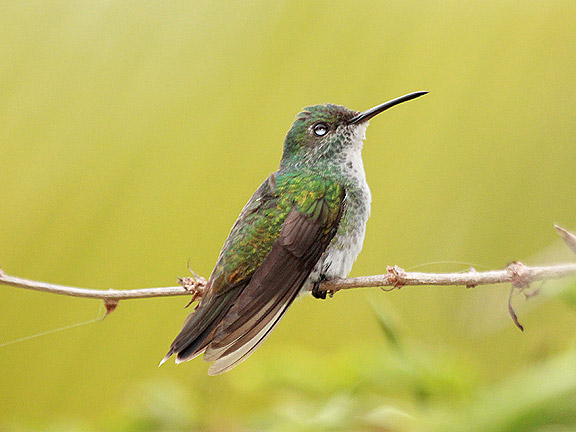

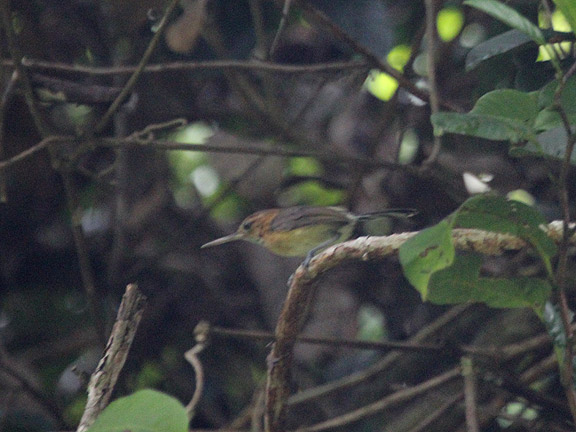


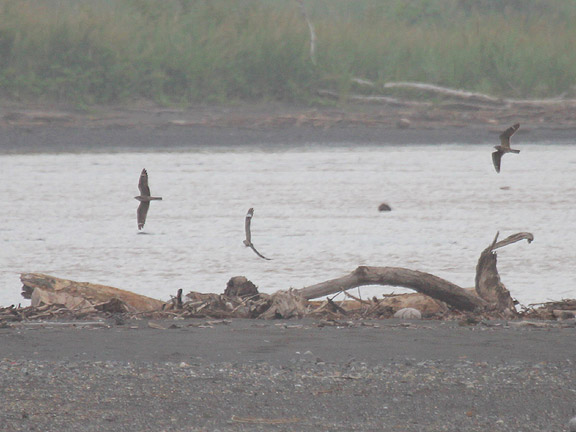


4 Comments:
Very cool! I can't imagine seeing 200 life birds in a week. Absolutely love the picture of the Capuchin!
@John: Thank you! Costa Rica is a pretty amazing place. Seeing 200 species there in a week is pretty easy, especially if you are just birding. I imagine had this been a birding trip that number might have been closer to 400 species. Oh well more for next time!
I have a ton more pictures of the monkeys, those will come later on my site.
cant wait for part 2 and 3!
Great photos! Congrats on getting that Mangrove Hummingbird- it's always a tough one.
Post a Comment
Subscribe to Post Comments [Atom]
<< Back to Previous